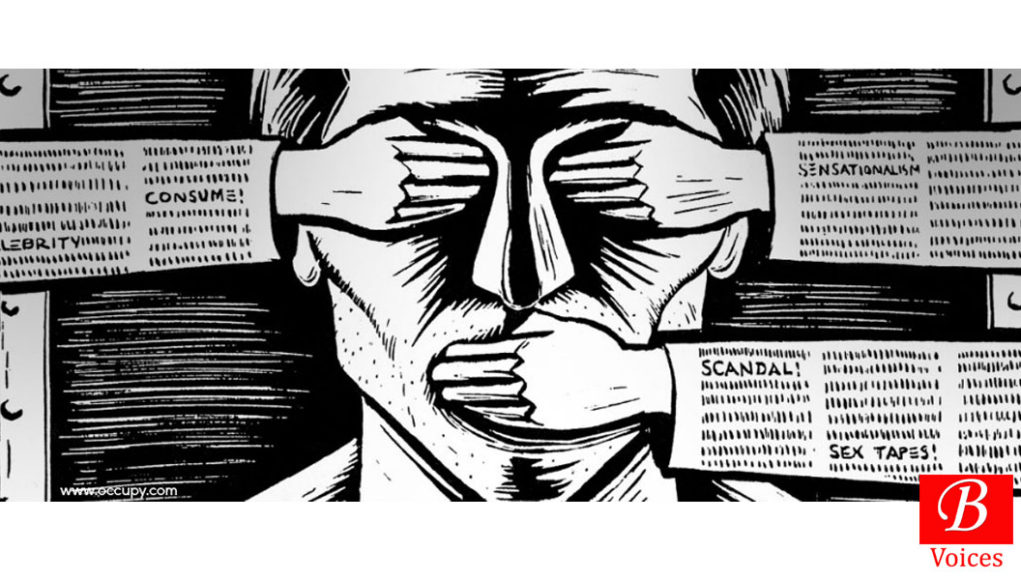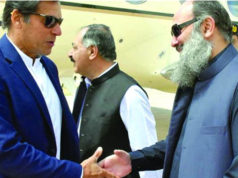Ayaz Khan
On August 11, 2016, National Assembly passed one of the controversial acts, Prevention of Electronics Crimes Act (PECA) 2016, amid much vociferation from both civil society and supporters of freedom of press alike. After PECA’s approval by the National Assembly, the law seems swinging into action and has hunted down dozens of government critics until now.
Globally, Pakistan escapes the list of top 10 censored countries, compiled by the Committee to Protect Journalists (CPJ) in 2015. But the recent clamp down on media freedom while passing PECA and empowering emasculated Pakistan Electronic Media Regulatory Authority (PEMRA), which has been floating directionless since 2000 having none at the driving seat, Pakistan seems strengthening its repressive grip on freedom of press against media in general and online in particular.
In Pakistan, since the repressive laws are present, which are often used to gag the voice of dissent in order to avoid accountability by the leaders, on the ground to muzzle the freedom of press, media in Pakistan have widely adopted a self-censorship measure. The self-censorship approach by the mainstream media has enabled the critics to din their criticism in the ears of government via social media. The trend of online journalism sprung after 2000, with the media organizations, particularly print, coalescing efforts to seize their readership online. The trend of online journalism has brought most of the journalists close to high risks to fall prey to threats. The recent abduction of bloggers along with killing of six journalists including a blogger signals the deterioration of the human rights conditions for Pakistan in forthcoming years.
Read also: Editorial: We Vow to Stay Critical
With the release of each report by HRCP, the country seems scoring very little to ameliorate Human Rights conditions. In democratic regimes, respect for Human Rights lies at the core of the government’s responsibility. For scoring better to elevate the respect for the human rights, freedom of press oils democratic machinery to function smoothly. From a myopic look, both human rights and freedom of press seem correlated. The more repression on freedom of press raised, higher the human rights deterioration.
According to a study by Anita R Gohdes and Sabine C Carey published on January 21, 2017 in Journal of Peace Research, killing of a journalist is likely to deteriorate human rights conditions. The research, which is based on data collected about killed journalists from 2002 to 2013 while measuring the repression of the governments with the help of points scored on Political Terror Scale (PTC) globally, in its findings suggests: first, if a journalist is killed by a government or unconfirmed actor it is likely to signal deterioration of human rights conditions. Second, if a journalist is killed by a nongovernment actor it is likely to signal subsequent deterioration of human rights conditions.
In their empirical findings, both authors argue that killing of a journalist by government actor is likely to suppress flow of information to avoid accountability. On the other hand, killing a journalist by a non-government actor such a criminal gang, or opposition political party leads to government’s repression as it creates a sense of insecurity resulting in loosing upper hold on these groups.
Given the context of the study, killing of journalists with impunity and curbs on freedom of press do not bid well for Pakistan. In 2016, 79 journalists were killed worldwide among them 7 were listed from Pakistan. According to Human Rights Commission of Pakistan, from 2009-2013, 69 journalists were killed in Pakistan. As per Pakistan Institute of Peace Studies’ PIPS report published in 2014, 2010 remained the deadliest year for the journalists in Pakistan. At the end of the year, almost 20 journalists were assassinated followed by 16 in 2011, 14 in 2012 and 11 in 2013.
A part from the soaring figure of killed journalists, In World Freedom of Press Index 2017, published by Reporters without Borders, Pakistan retains 139th position which is a slight gain since it was ranked at 147 in 2016 with a total score of 48.52. With this positive gain, Pakistan does inject a positive image in the world’s perception while reflecting a lenient attitude towards freedom of press. But the growing crack down on media persons and organizations paints a gloomy picture at home. In 2016, Pakistan remained the 4th deadliest country for the journalists, with the figure of journalists killed soaring to 115 since 1990.
For the current incumbent government—if empirical findings of R Gohdes and Sabine are put into observation—abandoning repressive measures towards freedom of press, might ease the woes effecting human rights and freedom of press simultaneously.
Writer is member of staff. He tweets at @ayazkhanzada18
Disclaimer: Views expressed in this article are those of the author and Balochistan Voices not necessarily agrees with them.
Share your comments!








